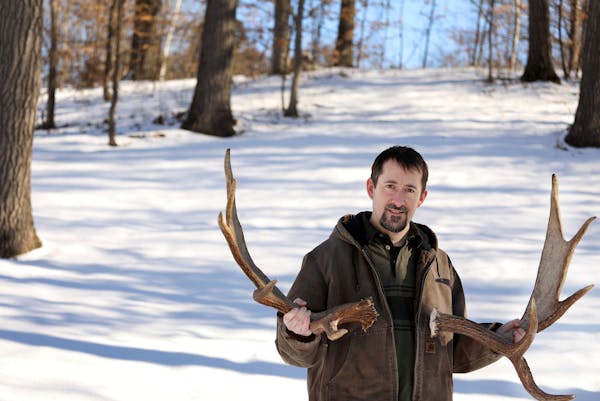Minnesota anglers will be greeted by new northern pike regulations when the open-water season begins in May.
The intent of the new regulations, spread over three northern pike "zones,'' is to reduce the number of small "hammer-handle'' northerns that infest too many state lakes.
Department of Natural Resources (DNR) fisheries managers say excessive numbers of small northerns can cut into perch numbers, contribute to smaller crappies and sunnies, and reduce the effectiveness of walleye stocking.
The DNR's three-zone proposal to remedy the problem was first offered in 2015. The scheme was approved last year in the Senate without a dissenting vote and was likely headed for passage in the House. But the language was included in a game and fish omnibus bill the Legislature failed to enact.
In response, the DNR created the regulations by rule-making, said Al Stevens, fisheries section program consultant.
"We published the proposed rule and left time for people to comment,'' Stevens said. "We received only 29 comments, four or five from different groups. Of these, only two wanted us to hold a public hearing.''
One administrative hurdle remains before the final OK is given to the new regulations. But the DNR is so confident approval will be granted that it has published the revised rules in its 2017 fishing regulation synopsis, which is being printed.
The new regulations establish different regulations for anglers and spearers in each of the three zones.
Here's a breakdown:
• In the Northeast zone (east of Hwy. 53, running between Duluth and International Falls), anglers can possess two northerns, with one over 40 inches. Northern 30 inches to 40 inches must be released.
• In the North-Central zone (west of U.S. Hwy. 53 and north of state Hwy. 7 beginning in Ortonville, east past Hutchinson, south on state Hwy. 22 to Glencoe, east on U.S. Hwy 212 to Chaska, south on state Hwy. 41 to the Minnesota River to the Mississippi River), the northern limit will be 10, with two longer than 26 inches. Northerns 22-26 inches must be released.
• In the Southern zone (south of the west-east line noted above beginning in Ortonville), the northern limit is two, with a minimum size of 24 inches.
Northern pike from different zones can be included in a statewide limit, but can't exceed the daily limit or size restrictions of the zone where the fish were taken.
The new regulations won't apply to the approximately 100 lakes now governed by special northern pike length or possession restrictions, including Mille Lacs. Also, border waters are excluded.
Here are the new pike spearing regulations:
• In the Northeast, the possession limit is two, one of which can be longer than 26 inches.
• In the North-central, the limit is 10, with one between 22-26 inches and one over 26 inches. Alternatively, the limit is 10 with two longer than 26 inches.
• In the South, the limit is two, minimum size 24 inches.
DNR fisheries officials say the new regulations recognize that lakes in the different zones hold varying numbers and sizes of northern pike, and are subjected to varying amounts of angling pressure.
In the South, for example, northerns are relatively fewer in number than in the other zones, grow comparatively fast and are subjected to significant fishing pressure.
In the Northeast, northern numbers are fairly low; the fish are relatively large; and fishing pressure is comparatively low.
In the North-Central, many lakes are beset by small pike, while relatively high angling pressure targets medium to large northerns.
The DNR believes three to five years might pass before the new rules produce bigger pike in the South, while eight to 10 years, or longer, could be required before size and abundance goals are reached in the North-Central.
Important, especially in the North-Central, will be a willingness by anglers to harvest small pike in significant numbers — something Minnesotans historically have been reluctant to do, even though northerns are tasty; so much so that many anglers prefer them to walleyes.
Granted, learning how to separate a northern pike's firm, white meat from its "Y'' bones is necessary to enjoy these fish as table fare. But if enough Minnesotans acquire this minor skill in coming years, particularly in the North-Central zone, fishing for a variety of species could improve.
Anderson: Anglers protesting tough new Mille Lacs rules are wrong

Anderson: Courts, not politicians, should rule on Red Lake, White Earth lands

Anderson: Multimillion windfall gets invasive carp deterrent moving
![A young whitetail deer searches for food as another blanket of snow coats the arrowhead. ] Minnesota -State of Wonders, Arrowhead in Winter BRIAN PETE](https://arc.stimg.co/startribunemedia/WK32UWWY6FKNWJUIYCJ6ZPT4AU.jpg?h=91&w=145&fit=crop&bg=999&crop=faces)
Anderson: In NE Minnesota, DNR staff, habitat and deer all decline


